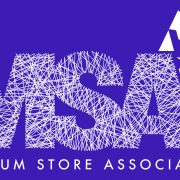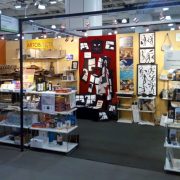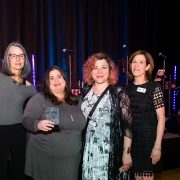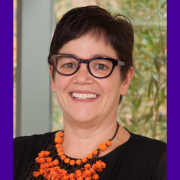Big Ideas from AAM’s Annual Meeting — and How They Fit Into Museum Retail Stores
June 24, 2019
By Julie Steiner
Part 1: Diversity, Equity, Accessibility and Inclusion
I had the privilege of attending the American Alliance of Museum’s (AAM) 2019 Annual Meeting last month. I participated in learning sessions with museum professionals from all areas of the field: curators, educators, administrators, trustees, directors, collections staff, volunteers, students and more. AAM’s Annual Meeting provides an invaluable forum for sharing and strategizing with top-level presenters and a wealth of big ideas. I left invigorated and inspired, my mind swimming with possibilities, and my courage bolstered by the passion of so many museum peers engaged in so many ambitious projects.
Along the way, I observed that some of the conversations happening in the broader forum of the museum industry do not yet consistently have an active place in the space of our retail-specific niche of the field. I would like to share some of my observations from AAM and adapt them to museum-store specific applications that MSA members can use.
First is prioritizing DEAI: diversity, equity, accessibility and inclusion. In their 2016–2020 strategic plan, the AAM board (with president and CEO Laura Lott) identified DEAI as one of the most vital issues to the field’s viability, relevance and sustainability, and AAM has since made the subject an imperative in all activities. Dr. Nichole Ivy wrote, “We believe that those who have historically been relegated to the margins of society due to legacies of racism, ableism, sexism, heterosexism, xenophobia and all other forms of injustice must be fully included in museum workplaces and communities.”
Click here to read AAM’s full report, “Facing Change.”
This focus was on display throughout the conference, primarily in the topics presented for discussion. Session examples included “Welcoming Guidelines for LGBTQ Audiences,” “Going Beyond English,” “Understanding Everyday Bias,” “The Principles of Feminine Design,” “Creating an Inclusive Museum Field Trip” and “Is That Hung White? Getting Real About Diversity in Exhibitions.” The catalogue of sessions reveals an industry struggling to diversify and to correct a variety of imbalances — a field of professionals hungry to learn how to do better.
Another visible way AAM differs from some conferences is in a concerted effort to represent a diversity of participants among panels and presenters. Who are the voices of “experts” in the museum field? A wide variety of media sources have recently discussed the move against all-male panels across a broad range of industries, reassessing the ways conferences establish authoritative voices in a field, and how frequently those focus on male and white perspectives. However, AAM understands that the problem goes further, and that often when conference planners do grant space onstage to others, they relegate minority participants to those conversations that specifically center the issue of DEAI. AAM’s panels more frequently include gender and racial diversity throughout subject topics, although efforts in this area are continuous and ongoing.
The focus on DEAI was also on display on a practical, operational level: from opening the event with a tribal land acknowledgement, to a gender-inclusive restroom policy, to pronoun ribbons provided for attendees’ name badges (see photo below), to live-captioned meetings, ASL interpreters, and clear communication about physical access to all event and excursion sites. AAM attempts to build an event accessible to and inclusive of attendees of all race, nationality, gender, sexuality or physical ability. As an organization, AAM puts in the work to model best practices and make DEAI an underlying principle of their operations.
How does this apply in a retail environment?
I posit that when our stores align with our institutions’ missions, as all good museum stores strive to do, then all of the factors important to our overarching institution will also figure into planning our business operations. Museum stores provide the last (and sometimes longest-lasting) part of a guest’s visit, so to leave the stores out of the most meaningful conversations is to lose an opportunity for an institution to draw its final conclusions, solidify its impression on our guests, and extend the conversation the institution has with them.
Museum stores should adopt AAM’s practices to measure and improve diversity, access, inclusion and equity. Our retail professionals can access AAM’s DEAI materials and apply them to our staff and operations, as well as to the guests we serve. Examples of the resources offered by AAM include HR best practices for staff diversity, a booklet with tips for interacting with people with disabilities — especially helpful for those training frontline staff — and a newly published transgender inclusion toolkit. Our stores, as well as food service areas, ticketing, theaters and event spaces, can demonstrate the commitments held by our organizations and model elevated DEAI standards to our communities.
Nonprofit retail cannot be separate from these larger museum world changes and conversations. Museum stores are vital points of access to our museums, and our team members are invaluable for engaging with the public. As retail professionals, we have a great opportunity to assess our businesses with renewed consideration. We are fortunate to have access to the resources that AAM is pioneering for our field, and by collaborating with professionals across departments on these endeavors within our institutions, we can stand shoulder to shoulder with museum educators and program professionals to create museums that are safe and welcoming to all individuals in our communities.
 Julie Steiner (pronouns she/her/hers) is the director of retail operations for the Barnes Foundation in Philadelphia and was the 2017-18 president of MSA.
Julie Steiner (pronouns she/her/hers) is the director of retail operations for the Barnes Foundation in Philadelphia and was the 2017-18 president of MSA.

















Leave a Reply
Want to join the discussion?Feel free to contribute!